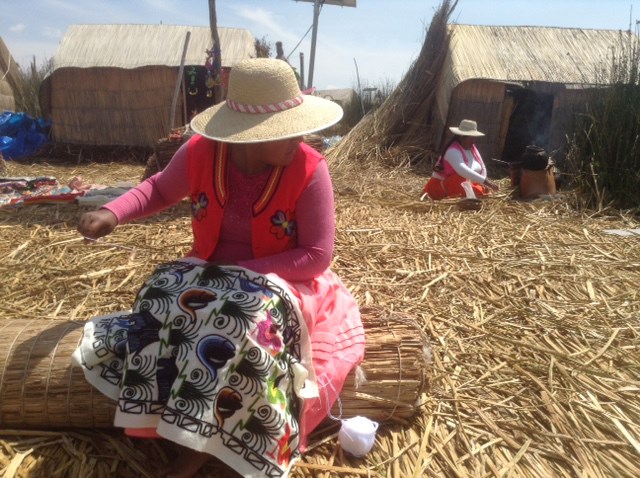This is a destination that many people have thought about visiting, and it is well worth trip! It exceeded our expectations. The beauty, history, culture, people and food were exceptional.
In April this year, we began our 10-day, mostly private tour with a couple of days relaxing in Lima in the very upscale community of Miraflores. It’s modern and very clean, and we enjoyed a fabulous dinner at a very reasonable price.
The following day, we took a four-hour private tour including the 18th century Larco museum and Royal Mansion, which houses 45,000 pieces of pre-Columbia artifacts.
A flight to Arequipa (population 500,000) was again fairly modern with great shopping and dining, a city tour and distant view of the three volcanoes: Misti, Chachani and Picchu.
The next day was a long drive with 16 passengers on a small bus-type vehicle. The reward was the absolutely stunning vistas of the Colca Canyon. At a depth of 13,650 feet, it is twice that of the Grand Canyon.
The people still maintain the pre-Inca roots with the cultivation of crops in the stepped terraces. Peru produces over 4,000 varieties of potatoes.
Early morning provided great viewing of the majestic condors floating on the wind thermals.
Next stop was Puno, where we enjoyed lovely waterfront accommodations and fabulous dining at Hotel Casa Andina. Puno has the highest elevation of 4,800 metres and despite chewing coca leaves and drinking the coca tea, the altitude brought on a bit of dizziness and annoying headache. Although pain killers and a rest would subside it, it would return constantly.
The trip on the water to see the floating Islands of the Quechua with 1,500 inhabitants was very interesting. These humble people literally live on bases of cut reeds that need to be refreshed twice a month. They are very talented with textiles and make many hand-crafted items. I purchased wall hangings, jewelry, a woven basket and a few other items.
Next was a trip to Cusco and the Sacred Valley. Once again, the views were stunning and the history always fascinating.
Then came the final destination of Machu Pichu! The first class train with dome is the way to travel for this journey.
When we arrived, however, we were not quite prepared for the vast number of people. We did not expect those kinds of crowds before high season began. We were at the tail end of the rainy season. I would not recommend high season unless you don’t mind crowds and don’t plan on staying there long.
A private tour, once again, was fabulous and very informative. You could picture the Incas living and working the lands.
We caught the train back to Cusco for our last evening and flew back to Lima the next day.
The final part of our itinerary included a four-hour culinary tour, which was the perfect way to end our trip. From a seaside bar in Miraflores to three other destinations including Amaz with delicious traditional Amazonian / Peruvian flare, to the dessert at the restaurant built beside and overlooking the ruins, the evening was capped off with an attempt to walk off the over-indulgence of food. We ended up at an ice cream shop to put the final touch on the delicious punishment.
This was our second time using the South America Travel company. We had used them in the past for a Colombia tour and were very impressed with their service.
If you have been thinking about Peru, I strongly suggest you start planning your trip.



